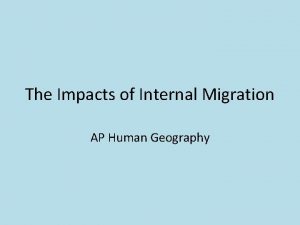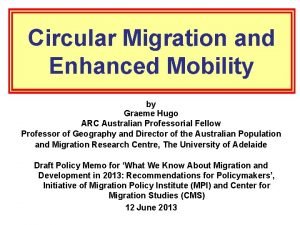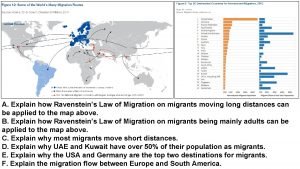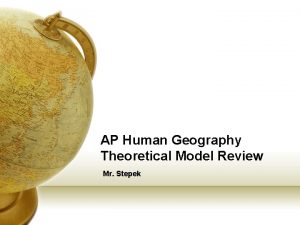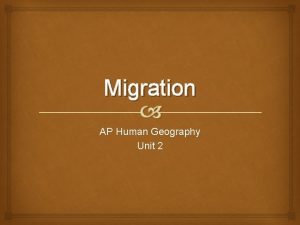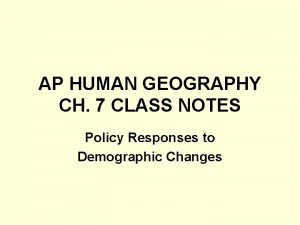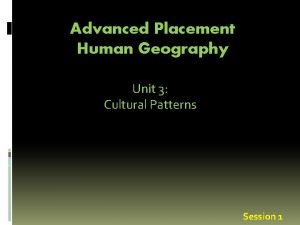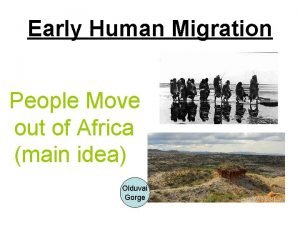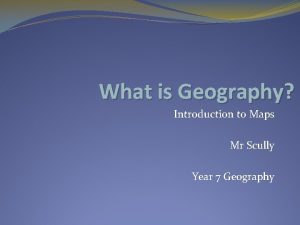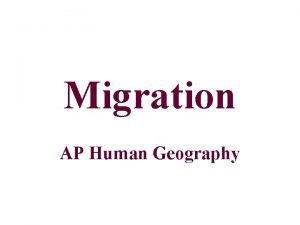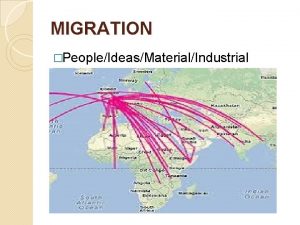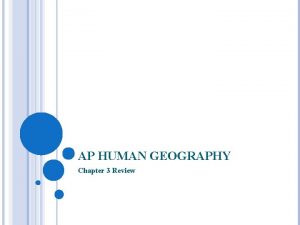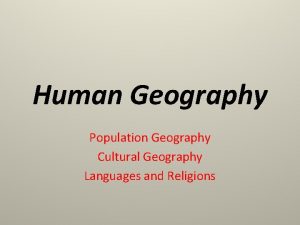AP HUMAN GEOGRAPHY Population Migration Review POPULATION DEFINITION













- Slides: 13

AP HUMAN GEOGRAPHY Population & Migration Review

POPULATION DEFINITION QUESTIONS Explain why a geographer defines overpopulation as too many people compared to resources? How do the economics of a country affect their stage of the DTM? � For instance, what happens to birth rate? Death rate? NIR? Without looking it up, how could I determine the most populated country from this list: � � � Iraq France Indonesia Russia Algeria

YOU DECIDE… Which characteristics appear on each type of land, and is it ecumene or non-ecumene? � Cold � Dry � Wet � Warm � High

POPULATION AND LDC’S Environmentally speaking, why is it that LDC adults are having more children than adults in MDC’s? Although South Asia has the fastest growing NIR (pg. 51) and India is set to take over as the most populated country, as a region which of the following is experiencing the most rapid growth? Which stage of the DTM are most of its countries experiencing? � � � Eastern North America Central Europe Sub-Saharan Africa Central Asia South America

POPULATION GROWTH Identify and explain reasons why population exploded in the 20 th Century. � Remember, the United States and Europe reached Stage 2 in the 1800’s due to the Industrial Revolution � So what revolution pushed African, Asian, and Latin American countries into Stage 2 in the 20 th Century?

MALTHUS- WHAT’S WITH HIM? What he got correct? � What he missed? � � � Population increase More brains, more technology Higher yielding seeds/ Agricultural productivity Social injustice vs. not enough food Why do some believe he could be right? � Population has been rising quickly � Food supply has generally grown as Malthus predicted Limited use of contraception in stage 2 countries Conversion of farmland for urban use Why do some believe he is wrong? � Population has not been rising exponentially � Population policies such as one-child Carrying capacity has expanded Human ability to create new techniques

MIGRATION TIME Here we go!


U. S. IMMIGRATION 17 th and 18 th Centuries � (mostly) Harsh economic conditions and persecution can make the argument forced, but as a whole, it was voluntary � Forced voluntary from Europe from sub-Saharan Africa Early 20 th Century (a little of late 19 th Century) � Million of immigrants came to the U. S. Ireland- economic push factors Germany- political unrest Southern and Eastern Europe- Industrial Revolution diffused to these areas and triggered a population boom

MIGRATION VOCAB WE DIDN’T GO OVER Step Migration � Migration to a distant destination that occurs in stages, for example, from farm to a nearby village and later to town or city. Chain Migration � Migration of people to a specific location because relatives or members of the same nationality previously migrates there.

REPEAT OF THIS QUESTION- DO YOU UNDERSTAND SCALE? How would scale affect rural to urban, internal migration?

WHAT DO EACH OF THESE DESCRIBE? When trying to migrate to California from New York, you detour to Washington State because of California wild fires When migrating from Chicago to Florida, you need to wait in Northern Tennessee because of mud slides in the Appalachian Mountains

DESCRIBE COUNTERURBANIZATION
 Internal migration definition ap human geography
Internal migration definition ap human geography Wilbur zelinsky ap human geography
Wilbur zelinsky ap human geography Circular migration ap human geography definition
Circular migration ap human geography definition Ravensteins law
Ravensteins law Stimulus diffusion
Stimulus diffusion Mobility ap human geography
Mobility ap human geography Eugenic population policies ap human geography
Eugenic population policies ap human geography Human development index definition ap human geography
Human development index definition ap human geography Ap human geography political geography frq
Ap human geography political geography frq 5 themes of geography ap human geography
5 themes of geography ap human geography Stateless nation
Stateless nation Distance decay ap human geography
Distance decay ap human geography Human migration out of africa
Human migration out of africa Topographic map definition ap human geography
Topographic map definition ap human geography
